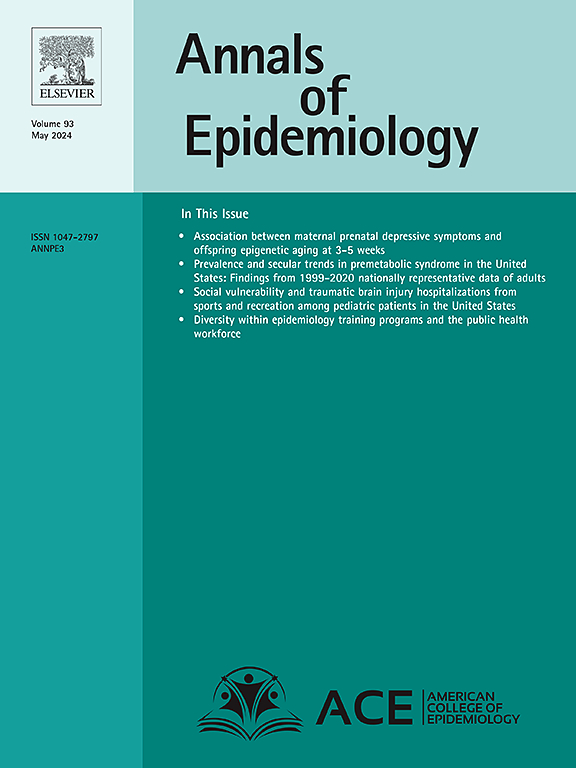公共卫生信息学中的机器学习:结果不平衡的预测模型可能不需要复杂采样结构的证据。
IF 3.3
3区 医学
Q1 PUBLIC, ENVIRONMENTAL & OCCUPATIONAL HEALTH
引用次数: 0
摘要
目的:本研究的目的是研究机器学习模型在不使用抽样权值的情况下对国家调查数据不平衡结果的预测能力。方法:我们在不使用抽样权重的情况下评估了机器学习模型对美国国家健康和营养检查调查(USNHANES)不平衡结果的预测性能。四种机器学习模型(支持向量机、随机森林、最小绝对收缩和选择算子回归以及深度神经网络)与包含调查复杂抽样设计的逻辑模型进行了比较。为了解决模型训练过程中的类不平衡问题,采用了三种重采样方法(过采样、欠采样和组合)。结果:除随机森林外,所有模型的平衡精度相似(范围为0.72 ~ 0.76),特异性小于敏感性。支持向量机和神经网络在灵敏度上表现最好(范围从0.79到0.83),而随机森林的特异性最大(范围从0.86到0.96),只有一个例外。PR-AUC评分和Brier评分较低,分别为0.2529 ~ 0.3313(分数越低越差)和0.1005 ~ 0.3245(分数越低越好)。结论:机器学习模型的预测能力与推荐的将复杂抽样设计与USNHANES结合预测骨关节炎发生的方法总体上相似。本文章由计算机程序翻译,如有差异,请以英文原文为准。
Machine learning in public health informatics: Evidence that complex sampling structures may not be needed for prediction models with imbalanced outcomes
Purpose
The objective of this study is to investigate the predictive ability of machine learning models for imbalanced outcomes from national survey data without the use of sampling weights.
Methods
We evaluated the predictive performance of machine learning models on imbalanced outcomes from the US National Health and Nutrition Examination Survey (USNHANES) without using sampling weights. Four machine learning models (support vector machine, random forest, least absolute shrinkage and selection operator regression, and deep neural network) were compared with a logistic model that incorporates the survey's complex sampling design. Three resampling methods (oversampling, undersampling, and combined) were used to address class imbalance during the model training process.
Results
For all models, the balanced accuracy was similar (ranging from 0.72 to 0.76) and the specificity was smaller than sensitivity except for random forest. The support vector machine and neural networks performed best with sensitivity (ranging from 0.79 to 0.83), while the random forest had the largest specificity (ranging from 0.86 to 0.96), with one exception. PR-AUC scores and Brier scores were low ranging from 0.2529 to 0.3313 (lower scores worse) and 0.1005–0.3245 (lower scores better), respectively
Conclusions
The machine learning models had overall similar predictive capacity to the recommended methods which integrate the complex sampling design for the prediction of osteoarthritis occurrence with USNHANES.
求助全文
通过发布文献求助,成功后即可免费获取论文全文。
去求助
来源期刊

Annals of Epidemiology
医学-公共卫生、环境卫生与职业卫生
CiteScore
7.40
自引率
1.80%
发文量
207
审稿时长
59 days
期刊介绍:
The journal emphasizes the application of epidemiologic methods to issues that affect the distribution and determinants of human illness in diverse contexts. Its primary focus is on chronic and acute conditions of diverse etiologies and of major importance to clinical medicine, public health, and health care delivery.
 求助内容:
求助内容: 应助结果提醒方式:
应助结果提醒方式:


